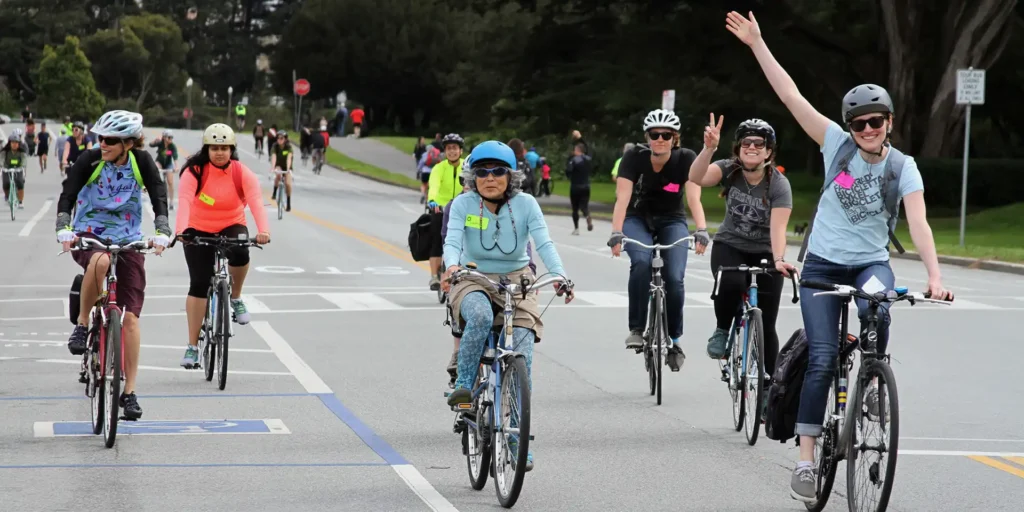Cycling is one of the best ways to stay fit, reduce stress, and explore the outdoors. Whether you’re interested in commuting, fitness riding, or weekend adventures, cycling offers numerous benefits to both your physical and mental health. However, before you hit the road, it’s important to prepare properly to ensure a safe and enjoyable experience. As a beginner, there are a few essential things you need to know to make your cycling journey smooth and fun.
In this blog, we’ll cover everything you need to know before your first ride—from choosing the right bike to safety tips and essential gear. Let’s get started!
1. Choosing the Right Bike for You
The first step in your cycling journey is selecting the right bike. With so many options available, it can be overwhelming to choose. Here are some types of bikes to consider:
-
Road Bikes: Ideal for cyclists who plan to ride on paved roads and want speed. Road bikes have lightweight frames and thin tires for efficient pedaling.
-
Mountain Bikes: Built for off-road cycling, mountain bikes are sturdy with thick tires designed to handle rough terrain, trails, and hills.
-
Hybrid Bikes: A great middle ground between road bikes and mountain bikes. Hybrid bikes offer comfort and versatility, making them perfect for beginners who plan to ride on a variety of surfaces.
-
Commuter Bikes: If you’re planning to use your bike for daily commuting, look for a commuter bike with features like built-in racks, lights, and fenders for practicality and comfort.
When choosing a bike, consider your riding goals, budget, and comfort. A bike that fits well will make your rides more enjoyable. Most bike shops offer fitting services to ensure that your bike is the right size for you.
2. Getting the Right Gear
While a bike is the most essential piece of equipment, there are a few accessories that will make your ride more comfortable and safer:
-
Helmet: Safety should be your top priority. Always wear a helmet to protect your head in case of an accident. Look for a helmet that fits securely and comfortably.
-
Cycling Gloves: These help improve grip, absorb shock, and protect your hands from blisters, especially during longer rides.
-
Padded Shorts: Cycling shorts with padding can make long rides much more comfortable by reducing friction and cushioning your seat area.
-
Water Bottle and Cage: Staying hydrated is essential, especially on longer rides. A water bottle cage mounted on your bike frame allows you to carry water easily.
-
Lights and Reflectors: If you’re riding at night or in low-light conditions, bike lights (front and rear) and reflectors are crucial for visibility. Even if you’re cycling during the day, having a rear light can help you be seen by others on the road.
3. Learning Basic Bike Maintenance
As a beginner, learning how to take care of your bike is crucial. Basic bike maintenance will help you avoid mechanical issues and ensure your bike runs smoothly. Here are a few simple tasks to get familiar with:
-
Checking Tire Pressure: Under-inflated tires can make your ride less efficient and increase the risk of punctures. Learn how to check tire pressure and inflate them to the recommended level.
-
Lubing the Chain: Regularly lubricating your chain helps it move smoothly and prevents wear. Use a bike-specific lubricant and wipe off any excess to avoid dirt build-up.
-
Cleaning Your Bike: After each ride, give your bike a quick wipe down to remove dirt and grime. A clean bike not only looks better but performs better as well.
You don’t need to be a mechanic to keep your bike in good condition, but knowing the basics can save you time and money.
4. Understanding Traffic Rules and Safety
Cycling is an activity that takes place on shared roads with other vehicles and pedestrians. As a beginner, it’s important to familiarize yourself with local cycling laws and safety rules to stay safe:
-
Follow Traffic Signals and Signs: Cyclists are expected to obey the same traffic laws as drivers. This means stopping at red lights, yielding to pedestrians, and signaling when turning.
-
Ride Predictably: Always ride in a straight line, and avoid weaving in and out of traffic. This makes you more visible and reduces the risk of accidents.
-
Use Hand Signals: When turning or changing lanes, signal your intentions with your left hand (left turn) or right hand (right turn). This alerts drivers and other cyclists of your movements.
-
Stay Visible: Wear bright clothing during the day and use reflective gear or lights at night. Visibility is key to preventing accidents.
-
Ride on the Right: When cycling on the road, always ride with the flow of traffic, not against it. This makes it easier for drivers to see you and for you to anticipate their movements.
5. Building Up Your Riding Skills
As a beginner, it’s important to gradually build your cycling skills to gain confidence and improve your technique. Start with short, easy rides on bike paths or quiet streets. As you become more comfortable, try longer rides and increase your difficulty level by tackling hills or mixed terrain.
-
Pedaling: Focus on smooth, consistent pedal strokes. Avoid stomping on the pedals, which can waste energy and strain your knees.
-
Braking: Learn how to brake effectively, using both front and rear brakes. Avoid slamming on the brakes, as it can cause you to lose control.
-
Shifting Gears: Practice shifting gears smoothly to maintain a comfortable cadence (pedal speed) as you encounter different terrain. Changing gears properly will help you ride more efficiently.
6. Know Your Limits and Ride at Your Own Pace
Cycling is a great workout, but it’s important to listen to your body. As a beginner, don’t push yourself too hard. Start with short rides and gradually increase your distance and intensity. Make sure to take breaks when needed and stay hydrated.
Set realistic goals for yourself and celebrate small achievements along the way. Remember, cycling is about enjoying the journey, not just the destination!
7. Understanding Cycling Etiquette
Whether you’re on a trail or riding through your neighborhood, it’s important to follow basic cycling etiquette:
-
Yield to Pedestrians: Always give pedestrians the right of way, especially when cycling on shared paths.
-
Communicate with Other Cyclists: Let other cyclists know when you’re passing them. A friendly “on your left” or a bell can help prevent accidents.
-
Clean Up After Yourself: If you’re riding in a park or shared space, be sure to follow the “leave no trace” principle by disposing of any trash responsibly.
8. Planning Your First Ride
Before you head out, plan your route and make sure you’re prepared. Familiarize yourself with the area, check the weather forecast, and ensure your bike is in good condition. If you’re going on a longer ride, bring essentials like your phone, ID, a map or GPS, and a bike repair kit.
Start with a short ride and gradually increase your distance as you build confidence and stamina. A leisurely ride around the block or in a park is a great way to get started before venturing out on busier roads.
Conclusion
Cycling is an enjoyable and rewarding activity that offers numerous benefits, from improving fitness to reducing your environmental footprint. As a beginner, it’s important to take the time to prepare—whether it’s selecting the right bike, learning basic bike maintenance, understanding safety rules, or building your cycling skills gradually.
By following these tips and investing in the right gear, you’ll be ready to hit the road with confidence. Happy cycling!

